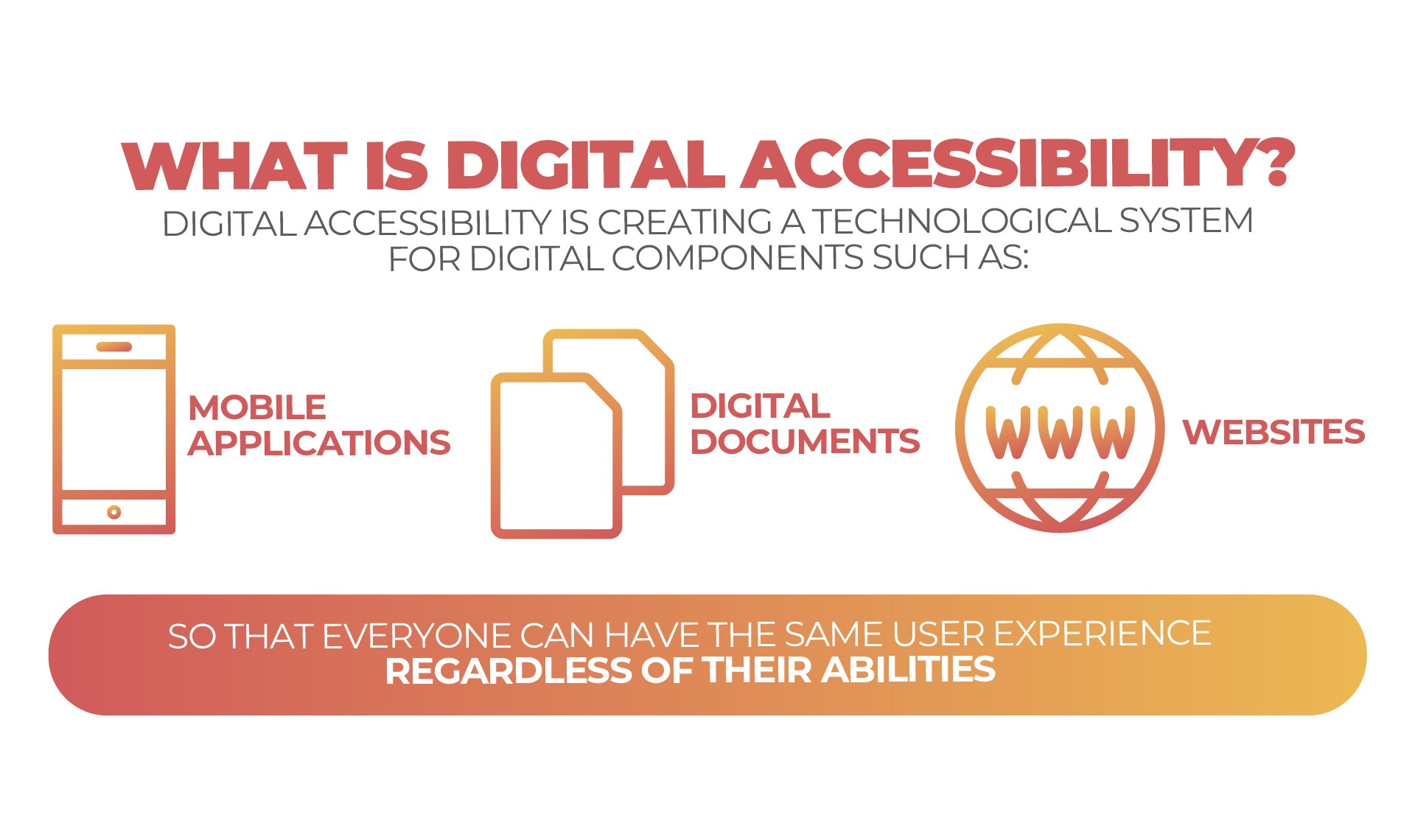It is estimated that more than 80 million EU citizens are affected by some form of disability (that is as much as the whole population of Germany!)
Noticeably, a lot has been done in the EU to improve accessibility to the physical environment, including buildings. But making the world around us fully accessible to all is not just about removing physical barrier. We must consider the electronic ones as well. The ongoing digital transformation and the ever-growing number of internet users call for more inclusive and human-centered solutions. At the moment, as much as 5% of people in the EU do not use the internet just because they have some form of disability. At the same time, less than 10% of websites are accessible to persons with disabilities.

What is digital accessibility?
Digital accessibility is creating a technological system for digital components such as mobile applications, digital documents, or websites so that everyone can have the same user experience regardless of their abilities. Various assistive technology solutions make navigating the web possible for people with disabilities.
Some examples include:
- Keyboard navigation – makes navigating a website without a mouse possible (important especially for persons with motor disabilities)
- Accessible PDFs – contains alt-text for images and tags that provide a logical structure that identifies the hierarchy and navigation of heading styles, lists, tables, endnotes/footnotes, etc. (important to visually impaired persons)
- Accessible videos – include captions, a transcript, and careful use of color, flashes, and/or animation.
- Screen readers – render text as speech or braille output (essential to blind and visually impaired persons)
- Instant Messaging – allows for real-time communication based on typed text (helpful for deaf persons)

A lot has to be done to make the world fully inclusive but even small individual efforts can make a difference. The European Accessibility Act, formally adopted in 2019, will certainly help in improving the situation. This EU Directive aims to improve the functioning of Europe’s internal market for accessible products and services while removing barriers created by different national rules. The act covers smartphones, tablets, and computers; websites and mobile apps; TV programs; e-books; among others. The national laws of EU Member States must be applied by July 28, 2025 at the latest.
EASIER’s commitment
As a H2020 project (topic: ICT-57-2020 – An empowering, inclusive Next Generation Internet), EASIER is committed to making communication inclusive and accessible. The multi-language project website, created by Martel Innovate, is characterized by light design, high contrast, and responsiveness. The website features a keyboard navigation bar and a dedicated accessibility plug-in that facilitate accessibility. As the project advances, we will continue our work to further improve digital accessibility.

